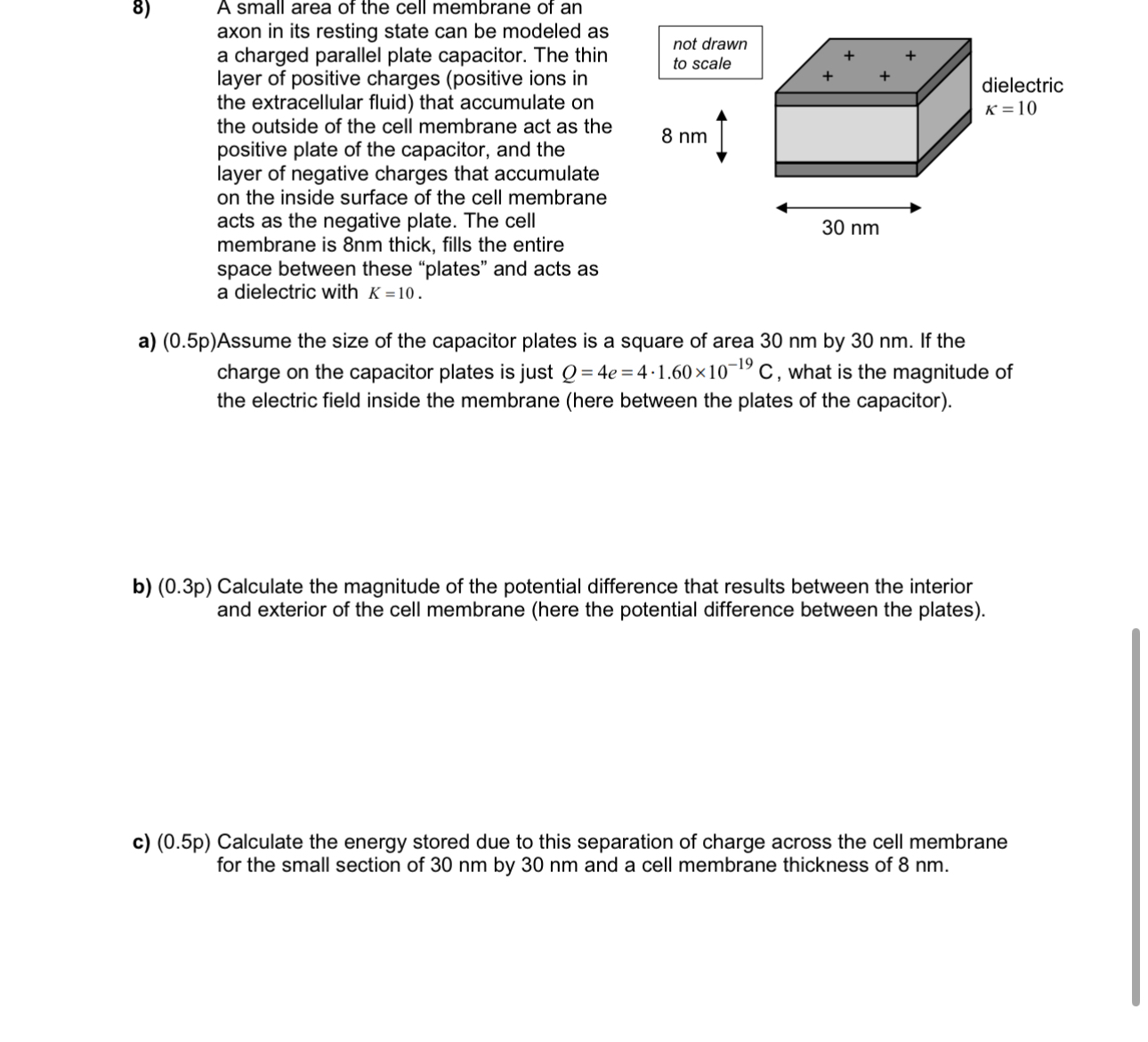Answered step by step
Verified Expert Solution
Question
1 Approved Answer
A small area of the cell membrane of an axon in its resting state can be modeled as a charged parallel plate capacitor. The

A small area of the cell membrane of an axon in its resting state can be modeled as a charged parallel plate capacitor. The thin layer of positive charges (positive ions in the extracellular fluid) that accumulate on the outside of the cell membrane act as the positive plate of the capacitor, and the layer of negative charges that accumulate on the inside surface of the cell membrane acts as the negative plate. The cell membrane is 8nm thick, fills the entire space between these "plates" and acts as a dielectric with K=10. not drawn to scale 8 nm 30 nm + dielectric K=10 a) (0.5p)Assume the size of the capacitor plates is a square of area 30 nm by 30 nm. If the charge on the capacitor plates is just Q = 4e = 4.1.6010-19 C, what is the magnitude of the electric field inside the membrane (here between the plates of the capacitor). b) (0.3p) Calculate the magnitude of the potential difference that results between the interior and exterior of the cell membrane (here the potential difference between the plates). c) (0.5p) Calculate the energy stored due to this separation of charge across the cell membrane for the small section of 30 nm by 30 nm and a cell membrane thickness of 8 nm.
Step by Step Solution
There are 3 Steps involved in it
Step: 1

Get Instant Access to Expert-Tailored Solutions
See step-by-step solutions with expert insights and AI powered tools for academic success
Step: 2

Step: 3

Ace Your Homework with AI
Get the answers you need in no time with our AI-driven, step-by-step assistance
Get Started


